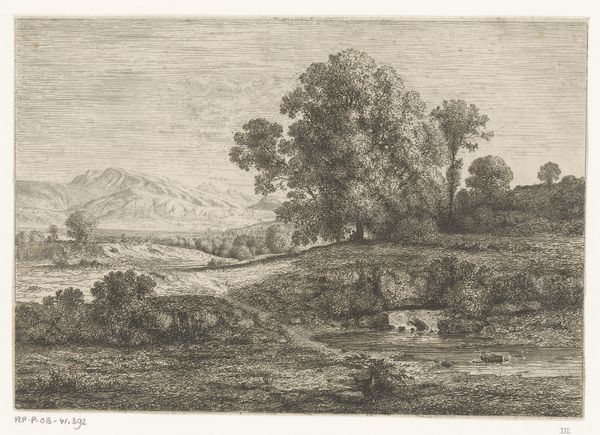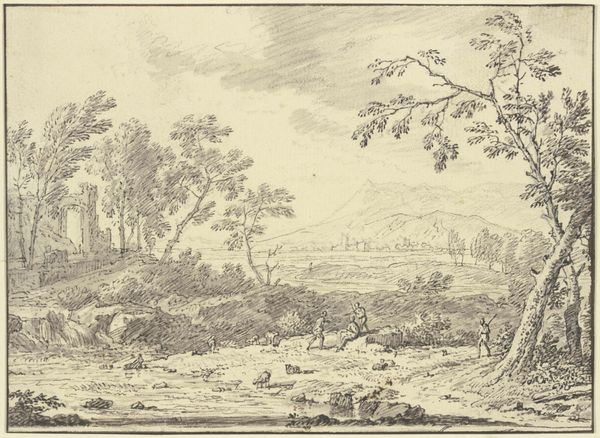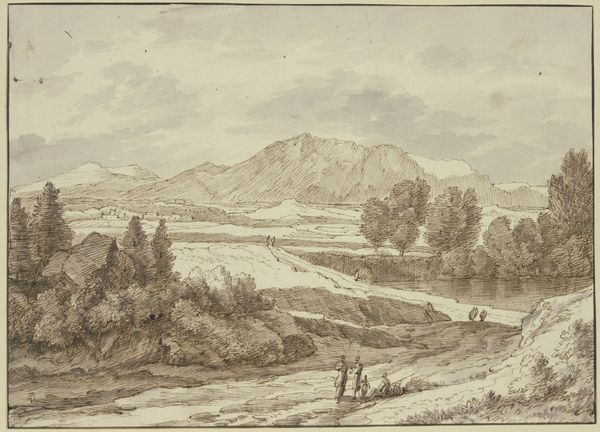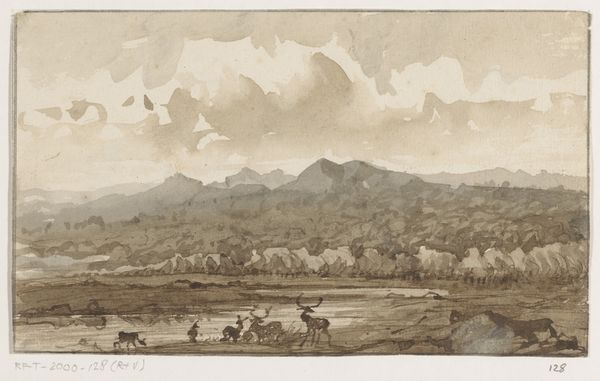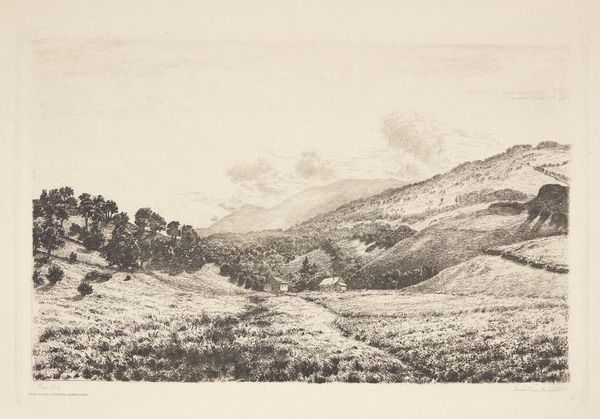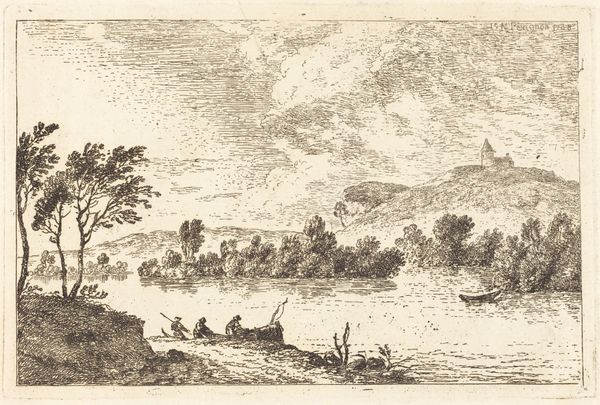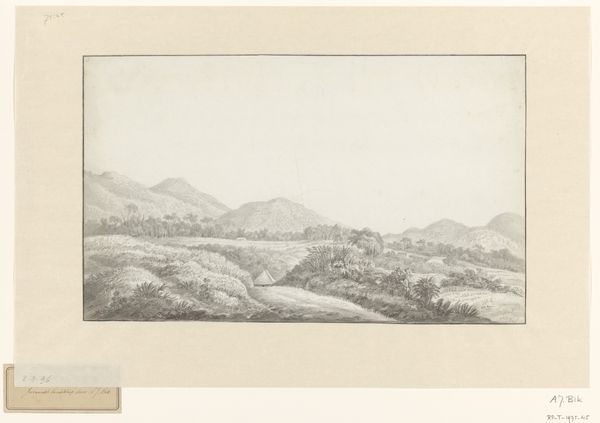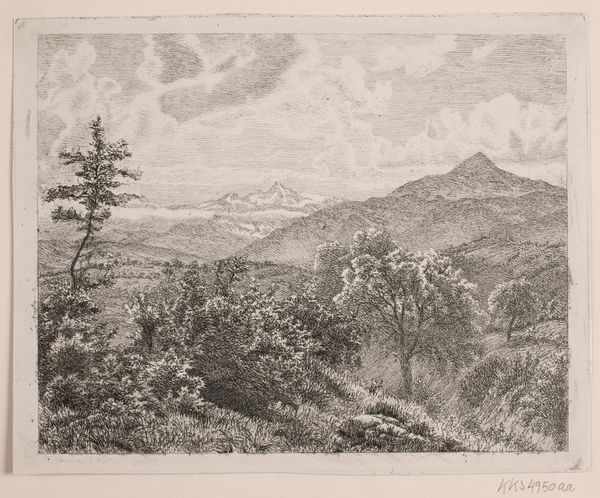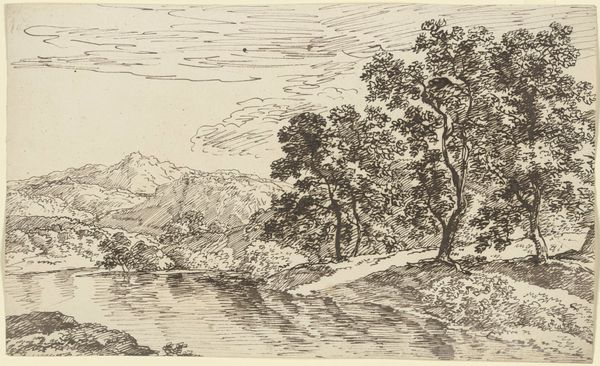
print, etching
# print
#
etching
#
landscape
#
realism
Dimensions: 7 15/16 x 12 1/8 in. (20.16 x 30.8 cm) (plate)8 15/16 x 12 7/8 in. (22.7 x 32.7 cm) (sheet)
Copyright: Public Domain
Curator: Immediately, I’m struck by the light and shadow. It feels quite serene. Editor: Here we have "Sierra Bianca," an etching by Alexander Schilling, dating back to around the 19th century. It is currently held here at the Minneapolis Institute of Art. The realistic landscape suggests… the title, Sierra Bianca? Probably depicts a locale that bears the name. Curator: Mountains, yes. There’s definitely something profound about the stark contrast of the looming, almost spectral mountain range juxtaposed against the grounded presence of the foreground, that imposing tree. The etching emphasizes its gnarled form and the small body of water. Editor: Interesting, your attention is drawn to that tree. To me, it reads more like an artistic strategy common for rendering pictorial space in landscape prints like these, framing the background. What do you suppose the cultural appeal of this scenery was, during its era? Curator: I see it, yes, it frames the composition and creates depth. But, trees have forever symbolized resilience, and those peaks represent something much more challenging, almost insurmountable, to humanity. So, for its time, landscape art became a tool of colonialism by evoking both exploration and conquest. Prints made art more affordable and more widely available. Editor: Right. The image as commodity. Yet I see a tension too, beyond that symbolic power structure, between nature tamed and untamed. Do you think viewers then responded differently to this play of symbols? Curator: Surely. This kind of picturesque style satisfied a specific cultural appetite: the sublime presented as accessible, understandable. An assertion of control and understanding, made palatable to bourgeois audiences. It presents a romantic, albeit controlled, depiction of westward expansion. Curator: Well, I have been struck by how art could reflect societal ambition, through this landscape. Editor: And for me, it's fascinating to contemplate how Schilling’s image blends symbolism and commercial purpose, subtly influencing our understanding even today.
Comments
No comments
Be the first to comment and join the conversation on the ultimate creative platform.



